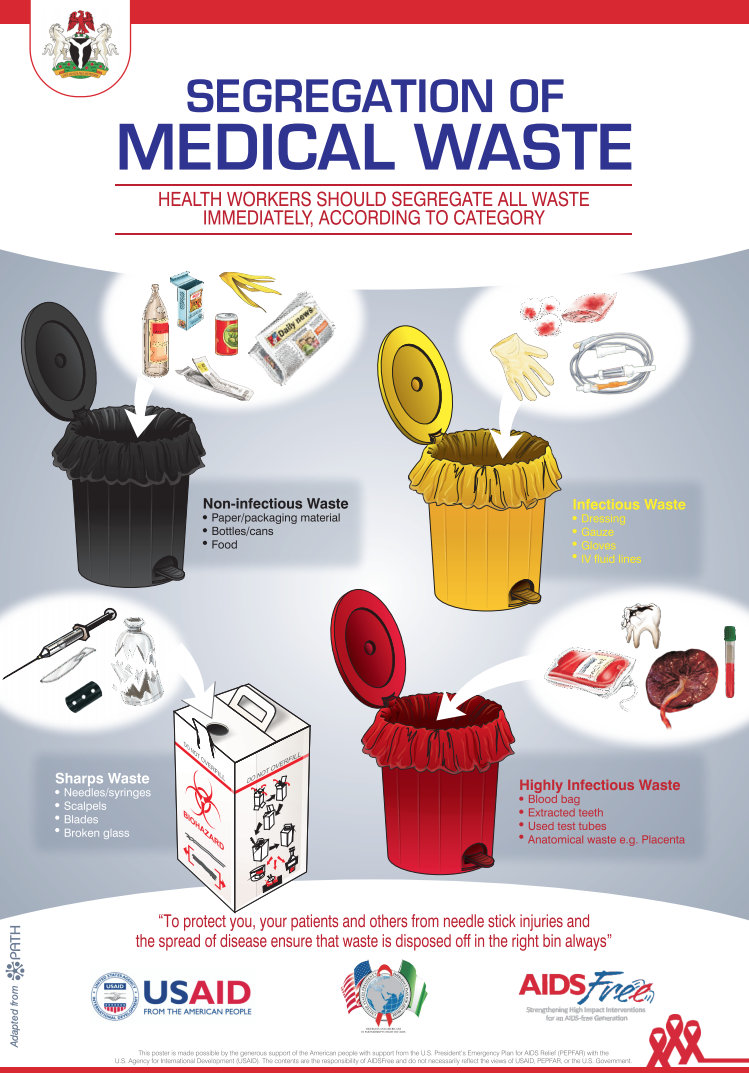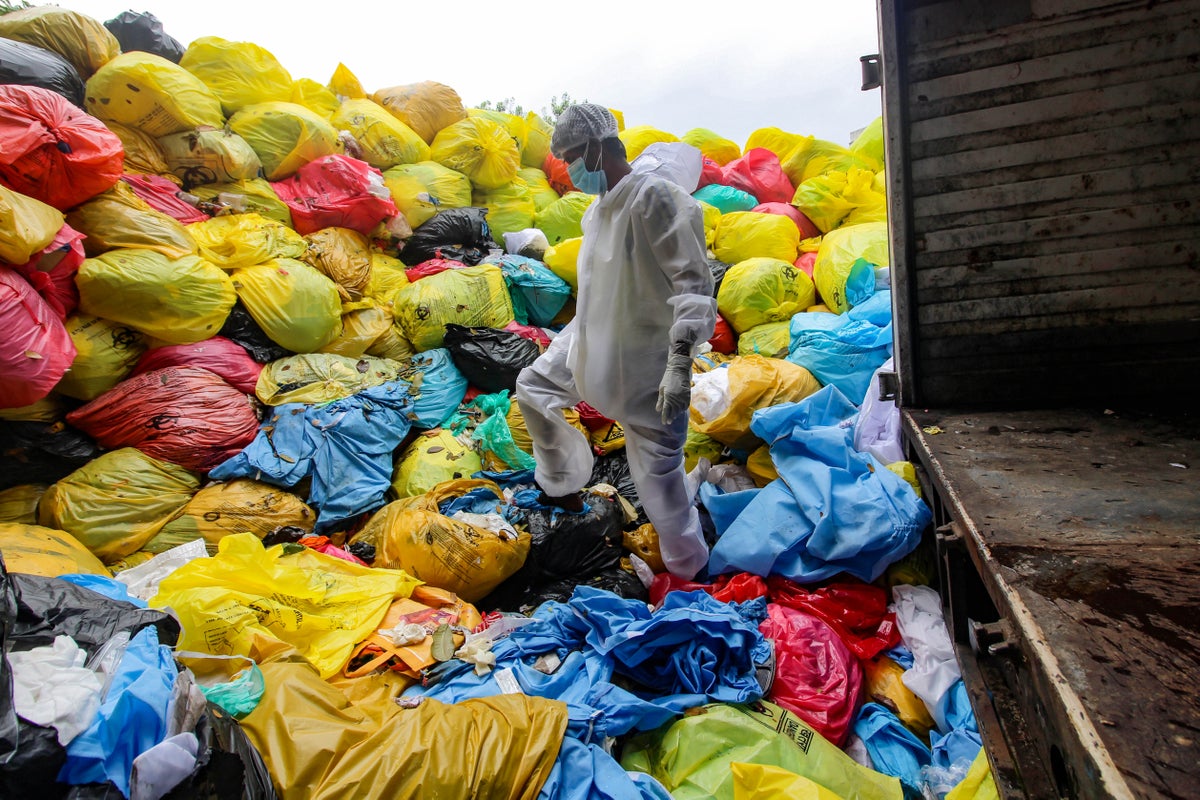Efficient Methods of Medical Garbage Disposal
Reliable methods of clinical garbage disposal are vital in preserving public health and environmental safety and security. Medical waste, including sharps, pathological waste, and pharmaceutical waste, have to be handled and taken care of appropriately to avoid the spread of infections and shield the setting. This requires adherence to rigorous policies and the execution of professional waste administration methods.
Proper segregation of clinical waste, safe and secure and risk-free storage, efficient treatment and disinfection approaches, and environmentally-friendly disposal choices are vital parts of a reliable medical garbage disposal system. Professional waste monitoring solutions play a vital duty in making certain conformity with regulations and reducing the threats connected with improper disposal. By utilizing these approaches, health care facilities can add to a safer and cleaner atmosphere while guarding the health of the community.
Proper Segregation of Clinical Waste
Correct segregation of medical waste is essential for ensuring the safe and reliable disposal of these possibly dangerous materials. Medical waste refers to any type of waste created during health care activities, such as health centers, centers, labs, and research facilities. It consists of a vast array of materials, such as used needles, syringes, infected dressings, ran out or unused medicines, and biological materials.
By setting apart clinical waste, health care centers can decrease the threat of infections, injuries, and ecological contamination. The process involves classifying waste right into different types, such as sharps, contagious waste, pharmaceutical waste, and non-hazardous waste. Each kind needs specific handling, packaging, and disposal methods to stop direct exposure to healthcare employees, waste monitoring personnel, and the public.
To guarantee proper segregation, health care centers need to create clear standards and give adequate training to team members. This includes educating workers on the various waste classifications, correct packaging strategies, and the usage of suitable containers - WasteX Medical Waste Disposal. In addition, clear signs and color-coding systems can be implemented to assist in the identification and segregation of various waste types
Safe and Secure Storage Space of Medical Waste
Safe and safe storage space of clinical waste is vital for maintaining the honesty and control of potentially harmful materials. Proper storage space not only protects health care employees and the general public from direct exposure to dangerous materials however likewise avoids ecological contamination.
To make certain secure storage space, clinical facilities ought to comply with particular standards. Waste needs to be kept in leak-proof and puncture-resistant containers that are labeled appropriately. These containers need to be tightly sealed to avoid any type of leakage or spills. Additionally, the storage space area should be secure and hard to reach to unapproved workers, reducing the risk of accidental exposure.
Proper partition of clinical waste is also vital for risk-free storage. Various kinds of waste, such as sharps, contagious materials, and pharmaceutical waste, ought to be separated to protect against cross-contamination. This partition can be attained via the usage of color-coded containers or bins.
Regular monitoring and inspection of the storage area are essential to recognize any type of prospective dangers or violations. This includes checking for indicators of damage or damage in the containers, making certain proper air flow, and monitoring temperature level and moisture degrees.
Efficient Therapy and Sanitation Approaches

One typically made use of treatment approach is autoclaving, which entails subjecting the waste to high-pressure heavy steam at temperatures over 121 degrees Celsius. One more approach is incineration, which includes melting the waste at high temperatures.
Chemical sanitation is one more efficient method for dealing with medical waste. This method involves making use of disinfectants such as chlorine compounds, phenolic substances, or hydrogen peroxide to eliminate or suspend microorganisms (WasteX Medical Waste Disposal). Chemical disinfection is frequently used for liquid waste, such as lab examples or bodily fluids
Over the last few years, alternative treatment techniques such as microwave disinfection, irradiation, and biological therapy have also obtained focus. These techniques supply benefits such as reduced ecological effect and energy intake compared to typical approaches.
Environmentally-friendly Disposal Options
In the realm of clinical waste disposal, thinking about environmentally-friendly alternatives is vital. Healthcare facilities generate a considerable amount of waste, including infectious materials, drugs, and chemicals, which can pose major threats to human health and wellness and the setting if not handled appropriately. Fortunately, there are numerous environmentally-friendly disposal alternatives readily available that can help minimize these threats.
Reusing medical waste involves setting apart and refining particular materials for reuse or repurposing. Additionally, some health care centers have actually carried out recycling programs for particular clinical tools or tools, additional decreasing waste generation.
This method involves transforming clinical waste into power with processes like incineration or anaerobic digestion. Anaerobic food digestion, on the other hand, breaks down organic waste in the absence of oxygen, producing biogas that can be used for electrical energy or heat generation.

Advantages of Professional Waste Administration Provider
One considerable advantage of specialist waste management services is the improved efficiency in handling and disposing of medical waste. By using professional waste administration solutions, healthcare facilities can make sure that all clinical waste is dealt with and disposed of correctly, lessening the danger of contamination and the spread of diseases.
Specialist waste monitoring services employ trained and knowledgeable go to this website personnel that are knowledgeable regarding the laws and guidelines for medical garbage disposal. They have accessibility to specialized devices and devices that allow them to handle different kinds of clinical waste safely and efficiently. These services additionally have reputable procedures and methods in place to make sure that waste is set apart, packaged, delivered, and disposed of in conformity with regional, state, and federal laws.
Additionally, specialist waste management services can offer health care facilities with thorough waste administration options. They can supply solutions such as waste collection, treatment, transportation, and disposal, tailored to the specific demands and demands of the center. This eliminates the problem of managing waste internally, enabling healthcare personnel to concentrate on supplying high quality patient treatment.
Verdict
Finally, reliable techniques of medical waste disposal entail correct partition, safe storage space, therapy and disinfection, and environmentally-friendly disposal options (WasteX Medical Waste Disposal). These techniques make certain the safe handling and administration of clinical waste, protecting against the spread of infections and securing the atmosphere. Professional waste monitoring services play an important role in carrying out these methods and ensuring conformity with laws. By adhering to these practices, medical care facilities can add to a safer and much healthier setting for both patients and the neighborhood.
Clinical waste, including sharps, pathological waste, and pharmaceutical waste, should be handled and disposed of appropriately to protect against the spread of infections and protect the environment.Proper partition of clinical waste, secure and secure storage space, effective therapy and sanitation techniques, and environmentally-friendly disposal choices are crucial elements of an effective medical waste disposal system. The process involves classifying waste right into various kinds, such as sharps, contagious waste, pharmaceutical waste, and non-hazardous waste. By making use of expert waste administration solutions, healthcare facilities can ensure that all clinical waste is dealt with and disposed of correctly, reducing the threat of contamination and the spread of conditions.
Professional waste monitoring services use knowledgeable and skilled workers who are well-informed regarding the regulations and standards for medical waste disposal.